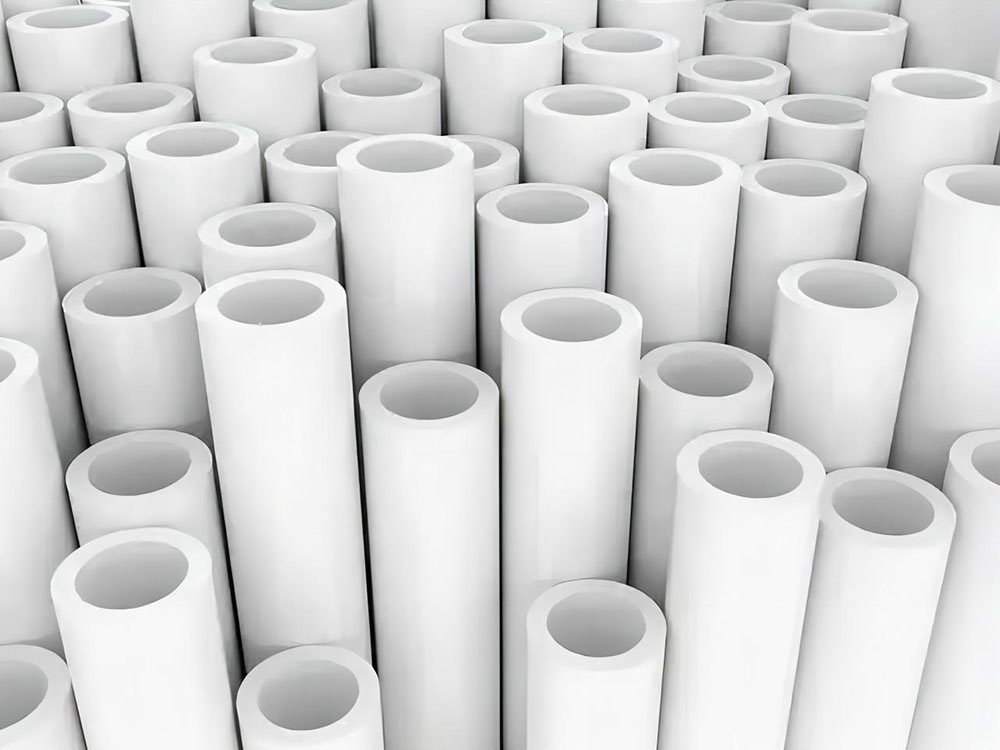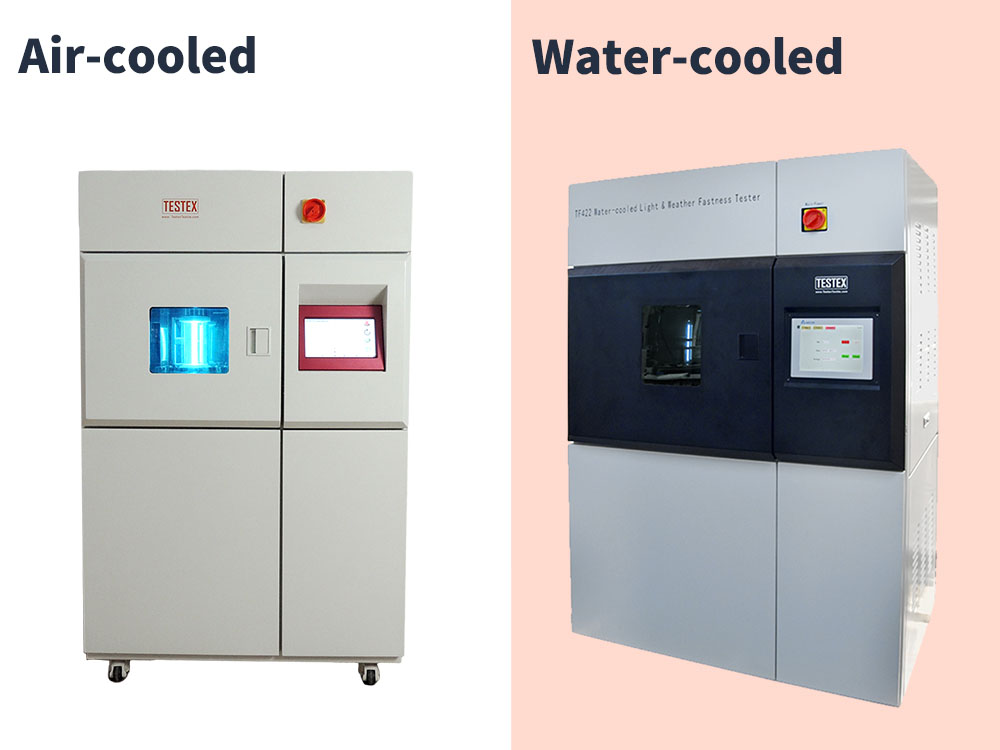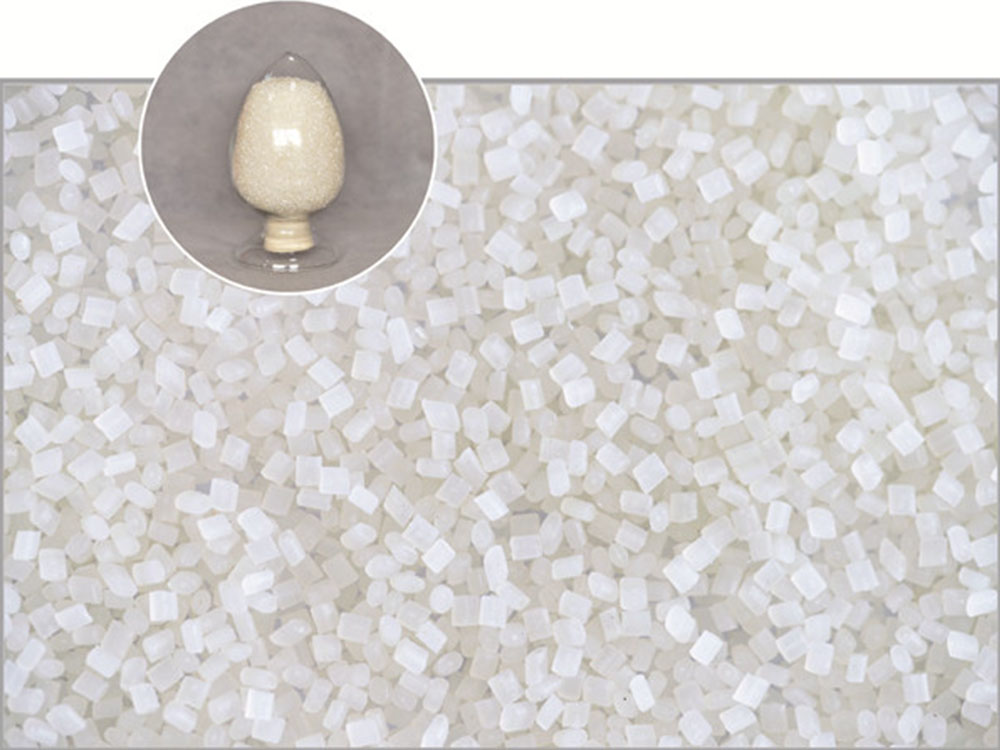Plastic degrades when people use, process, and store it. This happens due to things like light, oxygen, heat, radiation, smell, rain, mold, and bacteria. They destroy the chemical structure, which causes the original good performance to be lost. This is called aging. Plastic ages mainly shows in discoloration. It also shows in changes to physical, mechanical, and electrical properties.
Undoubtedly, the relationship between plastic and our human life is closely related. It is lightweight, durable, and easy to process. So, it is widely used in many fields. However, with time, plastic will also face a very serious problem, that is, aging. Aging plastic products will lose their original performance and appearance. They may even develop cracks, deform, and have other problems.
1、The scope of the plastic aging resistance test:
It includes plastic particles, wire, rope, tape, and hose. Also, pipe, bellows, sheet, film, and switch. Plus, doors, windows, rods, artificial leather, cables, foam, profiles, and car parts.
2、Plastic aging performance
Plastic aging is a key topic. The plastics industry must always deal with it. They must also find ways to extend the service life of plastic products. So what kind of standard is there for plastic aging? Now, the industry generally believes that plastics, rubber, and fiber are the three major types of polymer materials. Four types of changes can attribute to their aging.
① Changes in appearance
The issues are stains, spots, cracks, and warping. Also, silvering, frosting, and chalking. And sticking, fish-eye, wrinkles, and shrinkage. Plus, optical flaws, and changes in color.
② Changes in physical properties
This includes solubility, swelling, and rheological properties. It also includes cold, heat, water, and air permeability, and other performance changes.
③ Changes in mechanical properties
It measures tensile, bending, and shear strength. Also, impact strength and elongation. And, it measures stress relaxation and other changes.
④ Changes in electrical properties
These include surface resistance and volume resistance. Also, the dielectric constant, electric breakdown strength, and other changes.
3、The causes of plastic aging
We already know the main traits of aging. So, what causes them? The industry has reached a general understanding of the causes of aging. Scientists derived this information from research data.
The molecular nature of the plastic itself determines it on the one hand. Plastics’ molecules contain unsaturated double bonds. They also have branched chains and carbonyl and hydroxyl groups on the ends. These features make them prone to aging. They will degrade over time. As it degrades, it forms free radicals. They start a chain reaction, speeding up the degradation.
But, sunlight, oxygen, heat, water, radiation, gases, molds, bacteria, and insects also affect plastic. They change its internal molecular weight, causing aging.
4、 Leading to plastic aging of the four factors
①Light
Plastic in the sun will lead to aging, this is because the ultraviolet rays will destroy the plastic molecular chain, making it fragile. This is especially true in hot places. UV rays are more destructive there. Therefore, plastic products exposed to sunlight for a long time are prone to aging.
②Thermo-oxidative aging
Plastic in a high-temperature environment is prone to thermo-oxidative aging. This is because oxygen will react with the plastic molecules. This breaks their chains and causes aging. Also, high temperatures will make the plastic molecules move more. This movement can break the molecular chain, thus aging the plastic.
Only UV has been irradiated products. After a long time, they will form a protective layer that will no longer age. Humidity causes thermal expansion and contraction. It will make products age faster. Sprays damage the product’s surface. This damages the protective layer and leads to more aging.
③Chemical aging
Plastic in contact with chemicals ages. This is because the chemicals react with the plastic molecules. They break its molecular chains and cause aging. For example, plastic products age when exposed to acid, alkali, and other chemicals for a long time.
④Mechanical stress
Plastic ages when stressed. Stress breaks the plastic’s molecular chain, causing aging. For example, applying stress to plastic products causes them to degrade. They extrude and stretch them for a long time, causing this to happen.
Plastic ages mainly from light, heat, and oxygen. It also ages from chemicals and stress. To extend the service life of plastic products, we should try to avoid the influence of these factors. For example, avoid direct sunlight when storing them. Also, avoid long exposure to chemicals. At the same time, we should choose high-quality, aging-resistant plastic products. That will ensure their service life and safety.
5、Plastic aging test method
The main aging factors for plastics are heat and sunlight. They happen in the natural environment. Because plastic materials are most exposed to the environment are heat and sunlight. The study of how plastic ages from these two types of use has a key meaning for using it. We can divide aging tests into two types. These are outdoor exposure and laboratory aging tests.
5.1 Outdoor Exposure Test
Direct outdoor exposure means direct exposure to sunlight and other weather. It is the most direct way to test how well plastic weathers.
Advantages.
Low absolute cost, very good coincidence, simple, easy to operate.
Disadvantages:
Cycle times are usually very long. The climate varies globally and the sensitivity of samples varies inconsistently between climates.
5.2 Laboratory accelerated aging test methods
5.2.1 Xenon arc lamps simulate the full solar spectrum. This includes ultraviolet, visible, and infrared light. Xenon arc lamps are the best light source for testing. They are used to test the light stability of products like masterbatches and pigments. These products are sensitive to long sunlight and visible light. The xenon arc lamp can be precisely adjusted for its spectral energy distribution. It can simulate natural light under many conditions. It can simulate everything from sunlight to daylight through windows. Also, we can vary the light’s brightness. We can also vary its temperature and humidity. We can vary other parameters too. By simulating the conditions in which different materials are used, we can achieve this. Examples include automotive interiors and exteriors. Now, tests use xenon lamps to age artificial materials quickly. They have become the preferred and universal light aging test method. There are many corresponding xenon lamp aging test methods, such as ISO, ASTM, SAE J, GM, and so on.
5.2.2 UV fluorescent lamp light aging test method
The UV aging test mainly simulates the deterioration effect of UV light from sunlight on products. It also reproduces the damage produced by rain and dew. It is conducted by exposing the material to be tested to a controlled interactive cycle of sunlight and moisture while raising the temperature. UV fluorescent lamps are used to simulate sunlight, while the effects of moisture can also be simulated by condensation or spraying.
Fluorescent UV lamps are low-pressure mercury lamps. They emit light at a wavelength of 254 nm. Phosphorus coexistants convert this light to longer wavelengths. The energy of fluorescent UV lamps depends on the emission spectrum. The phosphorus coexistence and the diffusion of the glass tube make it. Fluorescent lamps are usually classified as UVA versus UVB. The material exposure application decides the appropriate type of UV lamp to use.
5.2.3 Carbon arc light aging test methods
Carbon arc lamps are an older technology. They were originally used to test how well dyes in textiles resisted fading. There are two types of carbon arc lamps: closed carbon arc lamps and open carbon arc lamps. All carbon arc lamps have a different spectrum from sunlight. The difference is large. The technology in this project has a long history. The original aging techniques used this equipment. The method is still in earlier standards, especially in Japan. There, the carbon arc lamp is often used for the artificial light aging test.
5.2.4 Ozone Aging Test
Ozone is a rare gas in the air. But, it is very destructive to plastic. Ozone can react chemically with the unsaturated bonds and reducing groups in plastics. This reaction can be irreversible. This leads to oxidative degradation of the plastic. It can cause the plastic to lose its usefulness. We usually test plastic materials for ozone aging with an ozone aging tester. The test needs ozone. An ozone generator supplies it. You can adjust the ozone’s concentration by mixing it with air using a mixer. The conditions in which ozone is used determine its concentration. Also, the chamber can adjust the temperature, humidity, and other factors. We do this to achieve the test’s goal. The material’s resistance to ozone aging and its behavior determine its properties. The laws of ozone aging also play a role.
5.2.5 Hot air aging test
Heat is a main factor in aging plastic. It speeds the movement of polymer chains, causing chain breakage. This generates reactive free radicals, starting a chain reaction. This leads to the breakdown or linking of polymers. The hot air aging test is a main test for evaluating plastic materials. Researchers use it to study the aging resistance of the materials. The test is usually done in a constant temperature blast drying test box. The drying box’s temperature can be set to fit the test requirements. We expose plastic materials to the dryness for regular sampling and testing. This lets us find the aging behavior and law of plastic materials. We do this to target plastic material modification and improve its performance.
5.2.6 Temperature alternating aging test
Temperature is another key factor in the aging of plastic. In these tests, we switch between high and low temperatures. We do this to test plastic’s temperature resistance. A chamber conducts the test. We start at temperature T1 (usually room temperature). Then, we heat to T2. We hold T2 for a while, then cool to a certain temperature T3. Keep the T3 temperature for a certain period. Then, lower the temperature to T1. This is a temperature cycle. Cycle length, according to the requirements of the specific test to determine;
5.2.7 Damp heat aging test
The moisture and heat aging test is effective. It tests how well plastic resists aging. The aging happens in high humidity and high-temperature environments. High humidity lets moisture enter plastic. It dissolves the plastic and hydrolyzes some of its hydrophilic groups. This aging degrades the plastic. Also, water getting into the plastic will dissolve and move its additives. These include plasticizers and compatibilizers, as well as other substances in it. This will change its mechanical properties. Heat can speed up polymer chain movement. This weakens the force between molecules. It also lets water in and speeds up plastic degradation.
5.2.8 Medium aging test
Certain liquids use some plastics for long-term immersion. This includes offshore or submarine equipment above the plastic material in seawater. It also includes certain parts of aviation aircraft in contact with aviation fuel. These uses require plastic materials with strong resistance to aging in the medium. Media aging test is common. It assesses the aging resistance of plastic. It predicts their life in certain media. We test the plastic media for specific uses. And we test them with man-made seawater, salt water, rain, acid, and alkali solutions. We also test them with fuel oil and other organic solvents..
6、Anti-aging method of polymer materials
Sunlight has ultraviolet, infrared, and visible light. Visible light has seven colors: red, orange, yellow, green, blue, indigo, and violet. Sunlight, broadly defined, is electromagnetic radiation from all spectrums of the sun. On Earth, you can see sunlight when the sun is above the horizon. Daylight is sunlight that filters through the Earth’s atmosphere. It reaches the Earth’s surface.
For plastics, ultraviolet light in sunlight is harmful. It has wavelengths of 280 to 400nm, which are the most damaging to plastics. Irradiation energy can break the bonds between a material’s molecules. This causes gloss reduction, chalking, fracture, and other aging. What methods can combat aging to extend the life of plastic products?
6.1 Physical protection (such as thickening, coating, outer layer composite, etc.)
Polymers age from light and oxygen. This aging starts at the material’s surface. It causes discoloration, chalking, cracking, and gloss reduction. Then, it spreads deeper. Thin products are more likely to fail early. So, thickening them can extend their service life. Products that age easily can benefit from applying a coat of weather-resistant material. It can either go on the surface or compound into the outer layer. This adds a protective layer to slow down aging.
6.2 Improve the processing technology
Many materials age during synthesis or preparation. For example, heat affects polymerization. Heat and oxygen age the polymer. So, we can add oxygen removal or vacuum devices to slow their impact. However, this method can only guarantee the material’s performance. It does so at the time of leaving the factory. It only works when making the material and can’t fix aging during its reuse.
6.3 Structural design or modification of polymer materials
Many polymer materials have groups that age easily. But, we can often have a good effect by designing the structure to use groups that do not age, instead of those that do. The polymer chain. Grafting or copolymerization add anti-aging groups or structures. This gives the material excellent anti-aging. Researchers use this method, but it is expensive and not yet for large-scale use.
6.4 Add anti-aging additives
Now, the best way to improve the aging resistance of polymers is to add anti-aging additives. They are widely used. They are cheap and do not require changing production. There are two main ways to add these anti-aging additives:
Adding additives involves mixing in anti-aging additives (powder or liquid). You mix them with resin and other raw materials. Then, stir and extrude the mixture. Pelletize or inject it into the mold, etc. This method of adding additives is simple and easy. This addition method is simple and easy to use. So, the majority of granulation and injection molding factories widely use it.
This is the process of adding anti-aging masterbatch. Good manufacturers use it to make stable products.
Anti-aging masterbatch is a suitable resin as a carrier, mixed with a variety of highly effective anti-aging additives, and then co-extruded by the twin-screw extruder granulation obtained, the advantage of its application is that the anti-aging additives in the preparation of the masterbatch in the process of the first pre-dispersion, and then in the process of the later material processing, the anti-aging additives to get the second dispersion, to achieve the purpose of the additives uniformly dispersed in the polymer matrix, not only to ensure the quality and stability of products, but also to avoid production of the product. This not only ensures the quality stability of the product but also avoids dust pollution during production, which makes the production more green and environmentally friendly.
7、Summary
The anti-aging test for plastics is designed to achieve a satisfactory pass rate. Almost all plastic products must be aged before they leave the factory. One reason for aging is to improve the reliability of the product. So far, there are no alternatives. For new products, where the performance of new components or complete machines needs to be evaluated, the aging index is higher. Expose the defects of aging products before leaving the factory, such as the reliability of welding joints and various defects in product design, material, and process; make the performance of aging products enter the stable range before leaving the factory, and lower the rate of return for repair.
Plastic aging resistance testing mainly simulated plastic products in the real environment during the use of a variety of harsh conditions of high-intensity testing, according to the actual requirements, a reasonable prediction of the service life of plastic products. Considering the complex aging mechanism, it is necessary to carry out a comprehensive assessment after a basic understanding of the role of various major factors on polymers. Therefore, to explain the complexity of polymer stability under the influence of various parameters, it is necessary to accumulate more basic information and endeavor to establish practical accelerated aging test methods.
For more environmental test chamber, Please visit: https://chiuventionclimatechamber.com
For more environmental test simulation programmes,environmental testing knowledge, instrument knowledge, and environmental testing laboratory knowledge, please contact us: [email protected]


